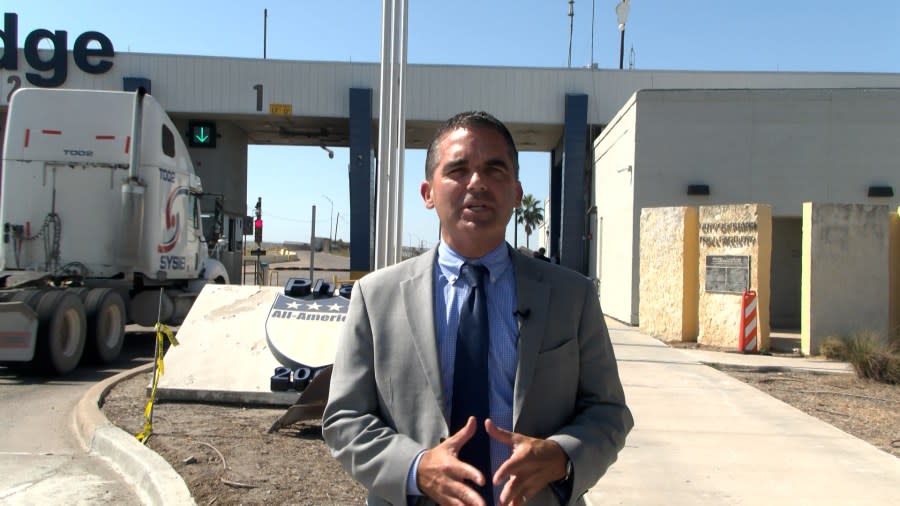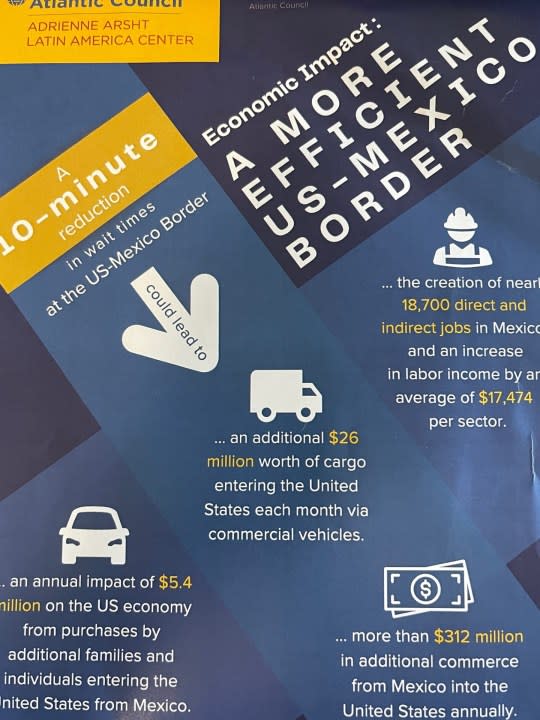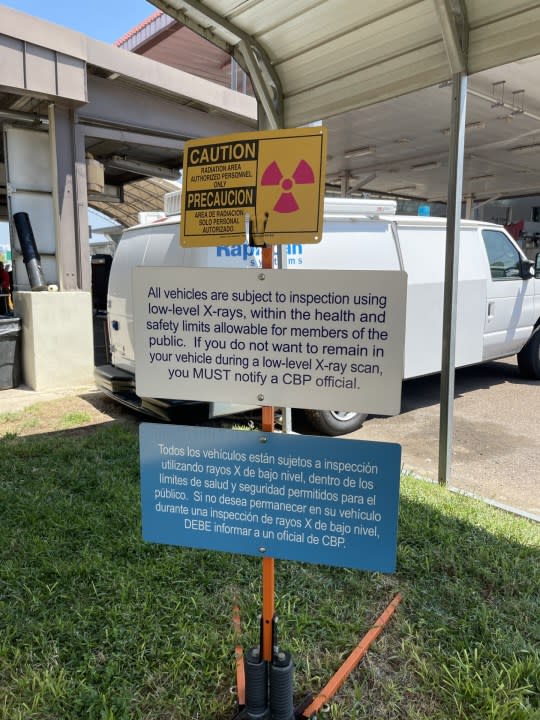U.S. economy could benefit from 10-minute drop in wait times at Southwest border crossings

PHARR, Texas (Border Report) — Reducing wait times at international bridges on the Southwest border could infuse millions of dollars into the U.S. economy, create jobs and boost border communities, according to recent reports from the Atlantic Council.
Members of the non-partisan D.C.-based Atlantic Council on Wednesday toured the Pharr International Bridge in South Texas to talk with local leaders and to discuss their theory, as well as security issues that would be needed to facilitate quicker border crossings.
American tourists shot by ‘mistake’ in firefight between rival Mexican cartels
Border Report caught up with Jason Marczak, senior director of the Atlantic Council, who led his group on a two-day border tour, which also included a stop in Laredo.
“We’re here at the border right now to talk about the economic importance of reducing wait times at the border and the resulting efficiencies that would create for business,” Marczak told Border Report. “We did work at the Atlantic Council over the last year showing that a mere 10-minute reduction in wait time would generate additional $312 million annually for the U.S. economy. And not just for the U.S. economy at large, but would have tremendous economic benefits for the four U.S. border states from additional commercial crossings and also non-commercial crossings. That would be expedited by a reduction of wait time.”

The Atlantic Council has produced three reports over the past year that discuss the economic impact of a more efficient U.S./Mexico border. The reports conclude that reducing wait times at land ports of entry could promote international commerce and increase jobs in border communities, as well as help to get goods to other states quicker and improve the U.S. supply chain.

The Atlantic Council’s first report on this issue came out in September 2022 and found that a 10-minute reduction in wait times at land ports could add $312 million in additional commerce from Mexico into the U.S. economy annually. The report, “The Economic Impact of a More Efficient U.S.-Mexico Border,” says an additional $26 million in commercial cargo could enter the United States from Mexico if these wait times were reduced.
That would create nearly 18,700 direct and indirect jobs in Mexico, and add $41.5 million per Mexico’s top 10 sectors to Mexico’s economy, according to the report.
The economic benefits for Mexican border states are even greater if bridge wait times were decreased, according to a second report the Atlantic Council released in February.
The report, “The Transformative Power of Reduced Wait Times at the U.S.-Mexico Border: Economic Benefits for Border States,” was released in February and found that Mexican border states would greatly benefit from reduced bridge wait times.
An additional 3,000 jobs could be added to Mexico’s six border states if wait times decreased by just 10 minutes. That would increase the states’ combined GDP by 1.34%, the report found.
US-Mexico border is deadliest migrant land route: UN agency
The Mexican border State of Tamaulipas, just across the Rio Grande from South Texas, would see the greatest growth in GDP of 1.9%; followed by 1.6% for the State of Baja California, and 1.5% for the State of Chihuahua, south of El Paso, according to the report.
In the four U.S. border states of Texas, New Mexico, Arizona and California, an additional 388 loaded commercial containers could cross every month if wait times decreased, the report said.
The report also found that 5,020 non-commercial monthly crossings could be added, resulting in $547,000 in extra monthly spending by those traveling from Mexico into the four U.S. border states every month.
“A reduction of wait time could generate an additional half million dollars annually from non-commercial commercials just alone by doing nothing else than just reducing wait times by 10 minutes,” said Marczak, who leads the Atlantic Council’s Latin America Center.

But getting commercial trucks through quicker would mean upgrading security systems and ensuring high-tech cameras and ports are installed at all ports of entry.
Marczak said the economic boom in the U.S. economy could help to offset additional security equipment and personnel needed at U.S. ports to make traffic flow quicker.
“Economic efficiency also then helps to bring greater security efficiency,” he said.
The topic of security at U.S. ports also came up on Tuesday during a discussion in San Antonio hosted by the Atlantic Council and the San Antonio Chamber of Commerce.
The Pharr International Bridge is the No. 1 U.S. port for the import of fruits and vegetables from Mexico.

The bridge is undergoing a multi-million-dollar expansion that will add a twin span adjacent to the current existing bridge and double its capacity and add four new lanes. That will reduce border wait times, Pharr Bridge Director Luis Bazan told the Atlantic Council members.
“The more that we can reduce wait times at borders all across Texas, and the Rio Grande Valley, the border writ large, the more benefit that brings to U.S. from an economic perspective, from a GDP enhancement perspective, and also for keeping the cost lower for families all across the U.S., and here at the Pharr bridge so far as keeping their costs lower for agricultural products,” Marczak said.
Sandra Sanchez can be reached at SSanchez@BorderReport.com.
For the latest news, weather, sports, and streaming video, head to FOX 5 San Diego.

